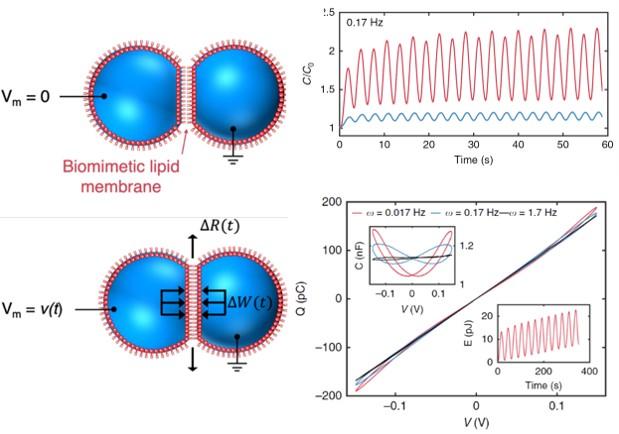
Dynamical changes in membrane capacitance of droplet interface bilayers in response to sinusoidal voltage excitation with decane (red) or hexadecane (blue) as the organic solvent. Capacitive dynamics are controlled by electrowetting (that changes membrane area) and electrocompression (that changes membrane thickness) and involve the migration of oil into and out of the lipid bilayer.
Scientific Achievement
We report the first example of a voltage-controlled memcapacitor in a lipid bilayer that mimics the composition and structure of biological membranes.
Significance and Impact
Findings will accelerate the development of biocompatible, low-energy materials capable of brain-like computing, biological sensing, and signal processing.
Research Details
- The system consists of a capacitive, planar lipid bilayer that forms at an interface between two lipid-coated aqueous droplets in oil.
- Voltage-driven geometrical changes in the membrane include the formation of new bilayer area at constant thickness due to charge-induced reductions in bilayer tension and changes in bilayer thickness that do not affect membrane area.
J. S. Najem, M. S. Hasan, R. S. Williams, R. J. Weiss, G. S. Rose, G. J. Taylor, S. A. Sarles, and C. P. Collier, "Dynamical nonlinear memory capacitance in biomimetic membranes," Nature Commun. 10, 3239 (2019). DOI: 10.1038/s41467-019-11223-8


